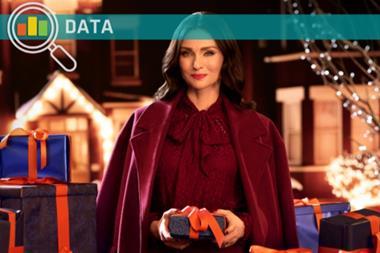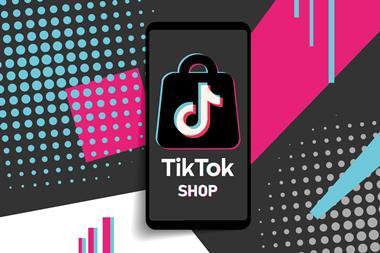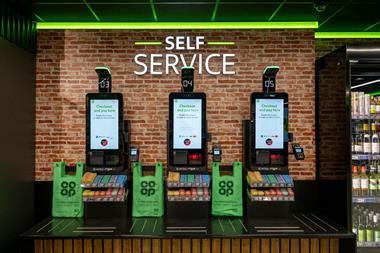Customers are increasingly defying stereotypes, so fitting them into traditional marketing segments is getting harder. Rebecca Thomson finds out how to deal with the changes

CRM systems: the facts
- Customers are increasingly defying stereotypes, buying outside traditional categories and mixing more expensive products with cheaper ones
- CRM systems have helped contribute to this by suggesting new products to try, but must now evolve to cope with the resultant complexity in buying behaviour
- The software will start to help drive personalised marketing offers and fitting customers into marketing segments is getting ever more complicated
- Marketing segments will rely on greater numbers of characteristics, building up a fuller picture of the consumer
- Data gathering will no longer start after a consumer has bought something but will switch to focusing on the process a customer goes through during the decision-making process
A few years ago, it was possible to know a fair amount about Mrs Clarkson’s shopping habits. Once you knew she was 36, lived in Solihull, was married with two children and earned less than £30,000 a year, a few fairly accurate assumptions could be made. She probably wouldn’t buy designer handbags, for instance, and would be more likely to rely on grocery bogof offers than buy organic fruit from the local deli.
But fast forward a few years and it’s not that easy. Mrs Clarkson may not buy expensive holidays but she might insist on organic fruit for her children. While she doesn’t drive a Mercedes she might spend a few months at a time saving for more expensive clothes that will last.
As Boots chief executive health and beauty Alex Gourlay said at a British Retail Consortium conference last month, shopping behaviour is becoming less predictable. Two key trends he identified revolve around income complexity and lifestyle or age complexity. According to the former, customers are getting harder to predict according to how much they earn. Low earners might spend less overall, but they often spend more on high-quality, durable goods that last. Meanwhile supermarket value ranges are no longer the mainstay of the lower income brackets - in a belt-tightening recession those on higher salaries are interested in cheaper products, too.
The reason for this less predictable behaviour boils down to having more choice, says Value Retail chief executive Scott Malkin, who runs luxury shopping outlet villages including Bicester Village. Brands are helping to drive this, deliberately luring new customers by expanding ranges to include cheaper products. Malkin cites jewellery brand Tiffany as an example of a company selling less expensive products to cater for consumers that want to buy into the brand but don’t have the disposable income for high-end jewellery.
Consequently, consumers are now less likely to identify strongly with one brand and buy everything from one place. They mix and match different brands, and high and low end products. “People used to buy the brand of car that reflected their social position - at some point in time, they started to buy cars that were outside their bracket and brands became more flexible,” Malkin says. Carpetright group IT and ecommerce director Ian Woosey agrees: “Customers are more brand agnostic. It’s become acceptable to carry Primark and Prada bags at the same time.”
Promoting greater choice
Boosting choice isn’t the only way companies have contributed to greater customer complexity. Customer relationship management (CRM) systems - which are supposed to make the process of organising shoppers into categories easier - have in some ways helped make customer behaviour more elaborate by suggesting new products for customers to try. John Mehinick, communications director at LMG, which runs the data analytics arm of Sainsbury’s Nectar card, says: “The marketers have probably been victims of their own success. We try and court behaviour change through CRM programmes but it does make what’s going on out there rather more complicated than it used to be.”
And while the focus on individualism has grown, the recession has produced its own interesting behaviour. Sue Grist, retail director at consultancy Egremont Group, says the downturn has forced customers to take a closer look at what they’re spending, and choose the things they want to splash out on carefully. “People are getting more ruthless about whether a product makes a difference to their lives,” she says. Not only that, but conspicuous consumption has fallen from grace. “The recession is affecting attitudes towards consumption and views towards value,” says Malkin. “People didn’t want to be seen spending in a visible way.”
The trend towards this less predictable behaviour would have increased anyway, but it’s been helped along with alacrity by the internet, which has revolutionised much of the retail sector. It has given shoppers access to a plethora of brands that might have otherwise fallen outside their catchment area, and it has empowered them by giving them more information about product than many store staff might have at their fingertips. Grist adds: “The number of shops you could visit was limited before the internet - you could only visit as many as you could on the high street before your feet started hurting. Now you can do it every night of the week if you want to.” Even though each shopper leaves a helpful online data footprint behind them, it doesn’t make them easier to slot into a category.
Technology with potential
So how can retailers tackle the problem? CRM systems are the go-to software answer for categorising consumers, but keeping each person in one segment is increasingly difficult when their behaviour doesn’t conform to type.
Jeff Woods, vice-president at analyst firm Gartner Research, says using CRM effectively in the future will be no easy task. Many retailers are starting to use CRM systems to help support personalised marketing offers, but the area is still in its relative infancy. “The only technology with potential is integrated marketing management, which integrates everything from segmentation and analytics all the way to execution. It gives you some hope of dealing with the more complex challenges.”
Others point out that the type of information collected on each customer will need to change. CRM has historically been quite a reactive process, says Woosey, with information collection only starting once a customer made a purchase. Now, retailers will need to track the entire customer journey. “We will need to try and understand what drives a customer to make a purchase with you in the first place. It’s a difficult thing to do but if you can influence the customer earlier in the process, it will prove useful over time.”
It is possible that CRM systems will be able to cope with the changes, but not without some tweaks, says Mehinick. Each segment of customers will have to be based on a greater number of characteristics, and loyalty cards and websites will become more valuable as a means of deciphering trends in the data they produce. “Principles are the same but it’s executed differently,” he says. “We always try to make sure offers are relevant - the difference now is pace. There’s the potential to make decisions very quickly.”
But while data and CRM can help crunch the numbers, what matters is that retailers have a clear idea of who their customer is and what he or she wants. Putting in the work to decipher the type of customers you have remains central to making sure the software is doing its job properly. Malkin advises speaking to store staff about the type of customers coming in, and using the internet to speak to shoppers.
As the amount of data available on consumers and the way they shop increases, the job of making it coherent also gets bigger. Shoppers are evolving quickly, which means the IT retailers use to track them must too - but used well, it will be a crucial pillar of retailers’ success in the coming years.


























No comments yet